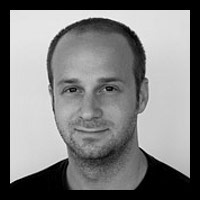Q&A: Rob Nederhorst, visual effects supervisor
 Rob Nederhorst started his career in visual effects in 1998 at Digital Domain where he worked on such feature films as Stealth, The Day after Tomorrow and Vanilla Sky, as well as dozens of commercials. He then served as a VFX Supervisor at Sway Studio where he was nominated for a Visual Effects Society Award.
Rob Nederhorst started his career in visual effects in 1998 at Digital Domain where he worked on such feature films as Stealth, The Day after Tomorrow and Vanilla Sky, as well as dozens of commercials. He then served as a VFX Supervisor at Sway Studio where he was nominated for a Visual Effects Society Award.
After leaving Sway, Rob helped open the doors at Speedshape LA, a sister office for the Detroit-based automotive visualization company. Upon leaving in December 2008, he moved to the Santa Monica offices of ReelFX, again as VFX Supervisor, and again working on a VES Award-nominated spot. After a stint at Svengali FX, Rob is now a freelance VFX Supervisor, with recent projects including Thor and Captain America.
In his session on Creating Highly Effective Composites for the Gnomon School of Visual Effects’ online Master Classes, which go out from 5-19 December, Rob brings all of this experience to bear.
The class takes viewers through the necessary steps to dial in a composite to give it its realism, focusing on the small, barely noticeable details that can a shot ‘feel’ real as opposed to just ‘looking’ real.
In the last of our interviews with this year’s Master Class instructors, we caught up with Rob to find out more.
http://vimeo.com/32937494
The trailer for Rob Nederhorst’s Gnomon Master Class, Creating Highly Effective Composites. To see the entire session, sign up for the Gnomon School of Visual Effects’
CG Channel: If you had to give a five-word pitch for the class, what would it be?
Rob Nederhorst: Feel it versus see it.
What single thing do you most hope that people remember after finishing the class?
RN: I hope people understand how the little things add up and can make something stand out as photographic versus it looking fake.
CGG: So what are those ‘little things’? VFX artists get to see a shot over and over again, but the audience only sees it once. How do you pick out the details that really matter?
RN: This is one of those things that just takes experience to realize. We all want the work to be perfect, but it rarely is. If you don’t notice something in the first two or three plays, in theory it won’t be noticed by an audience. But you never play it two or three times.
The other thing we do is always look at things in the context of the cut. That’s key. Sometimes the individual shots have issues that are just not apparent when viewed in the cut.
CGC: What advice would you give to a young artist hoping to become a VFX supervisor?
RN: The most important skill you can have is the ability to deal with people. People first, and then of course budgets and understanding what needs to be done in what kind of time.
Good artists will always do good work. The trick is getting good work in a specific time frame and knowing what changes will make the largest impact on the shot and show.
CGC: What part of your working day most makes you think: ‘This is why I do this job?’
RN: I love problem solving. I love making things look great. Visual effects offers the serious challenge of both on a hourly basis.
CGC: If you could wave a magic wand and change one thing about the profession, what would it be?
RN: I would change the client perception that we can do the same thing we’ve done before with less time, fewer people and less money. It’s true to a small extent but not to the extent that we are having to bid on projects now.
We make things happen but people’s quality of life suffers, and honestly, the work suffers too when you don’t have the time to properly massage it.
Visit Rob Nederhorst’s website
Visit the Gnomon website to enrol for the Master Classes ($295 for all 14 classes)
Full disclosure: CG Channel is owned by the Gnomon School of Visual Effects.
